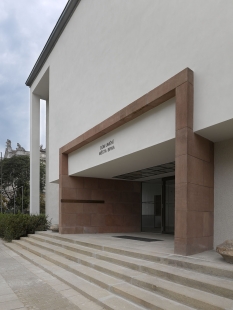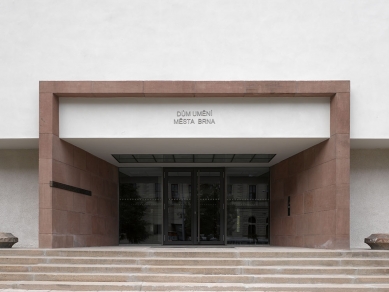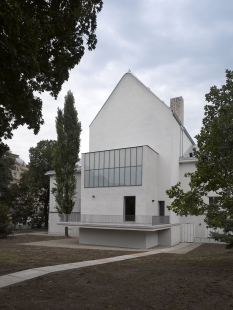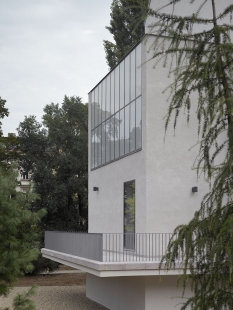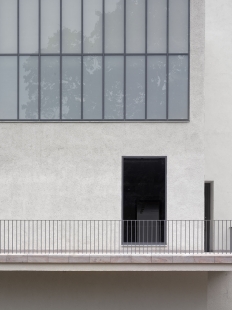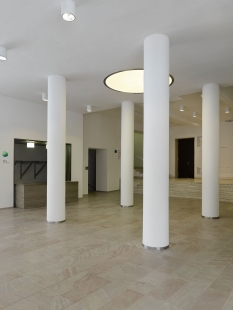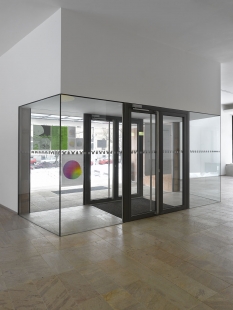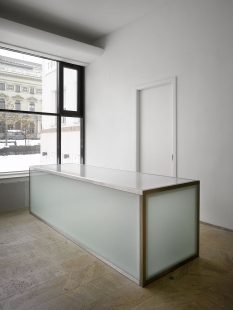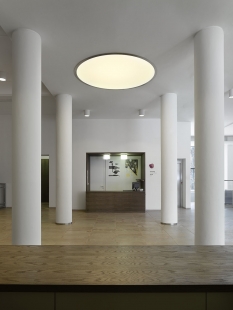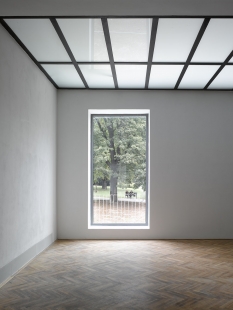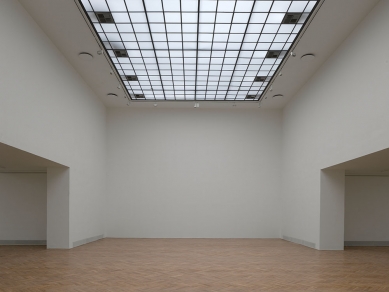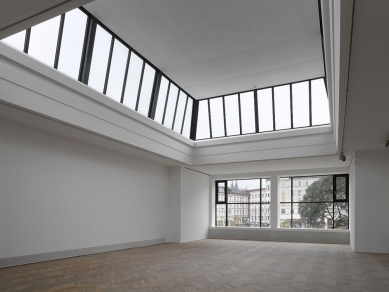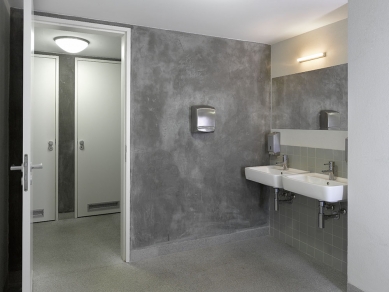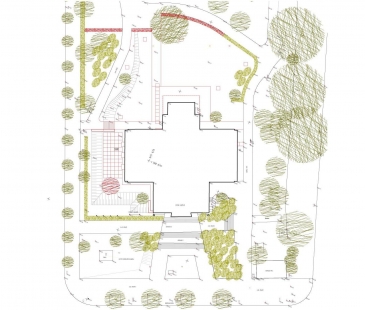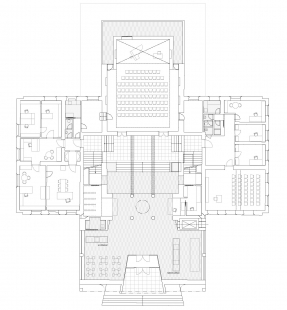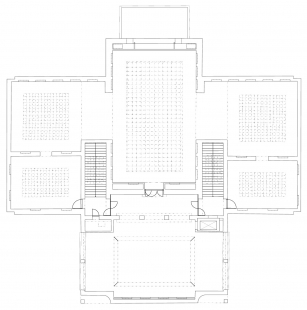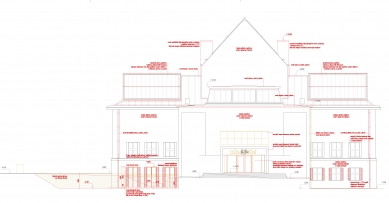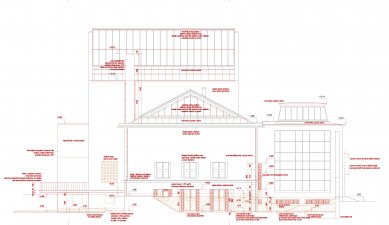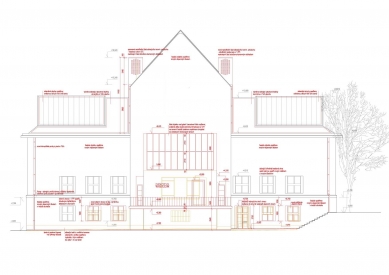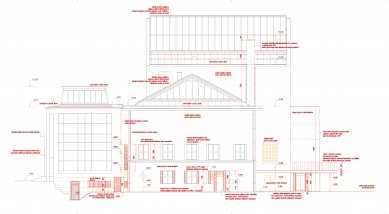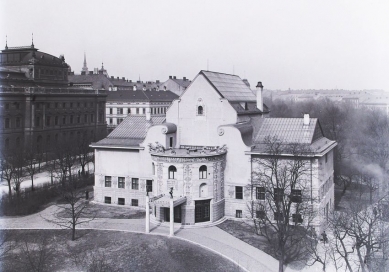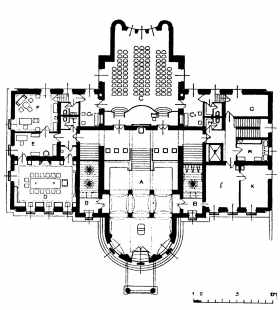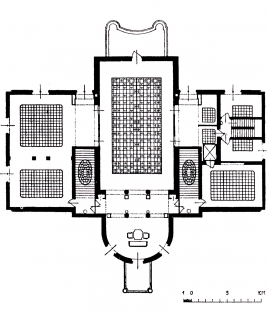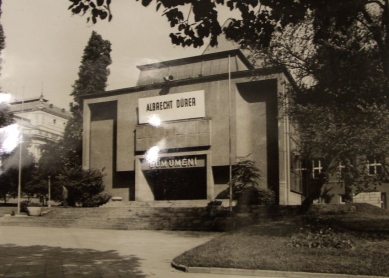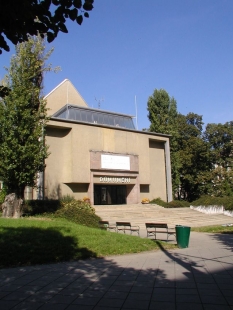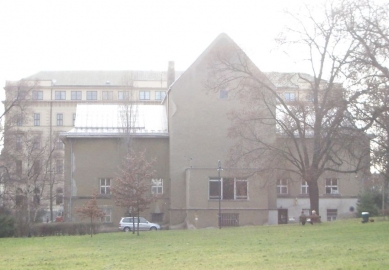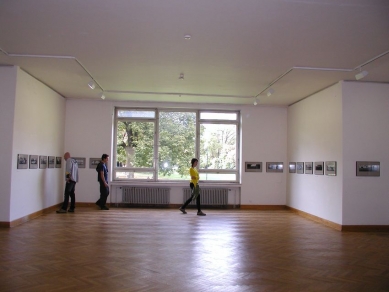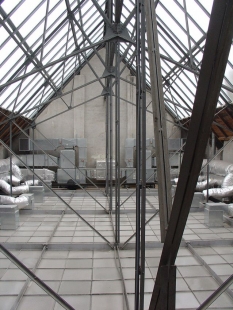
Reconstruction of the House of Art of the City of Brno

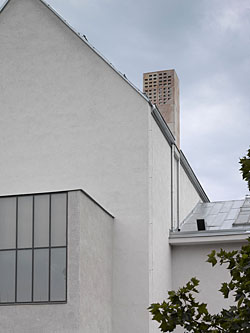 |
The place where the House of Art stands, in the winning design of the competition by architects Kellner and Neubauer from 1861, was one of the entrance gates to the historical city and to the newly developing areas known as Koliště with an enclave of adjoining parks, their newly conceived metropolitan spaces.
In the sense of a positive presentation of "renaissance" of natural motifs and human scale, the architectural significance becomes evident again in the original Art Nouveau concept of the House of Art (previously known as the House of Artists) according to Heinrich Carl Rieda (winner of the architectural competition in 1908). The frontal parts were crowned with wreaths of artistic decoration up to a certain cloth-like quality, while the rear parts established a relationship between the artwork and the park, with the city. Besides the immediate sense of the object, a new public interest and context for the city are determined here. The conception of art also as a theme of public interest was the main motto during the reconstruction, which is "new spirituality".
This novelty in the view of art is needed for the irreplaceable significance of the House of Art - for the perception of simple yet beautiful things - images, sculptures, and other artifacts. This is connected with the author's architectural effort, where the technique of reconstruction as "techné" does not offer just a materialistic sense, but one where both emotional and rational virtues that belong to the realm of art, evoke an aesthetic state, as well as an ethical one. This is the vision of art into which the city incorporates the house for art as (a community representing) architecture. In it, we return to both real and simultaneously uplifting things. In the indicated will for virtue, only what lies before the eyes can be expressed and named as it usually is and what it is called; this is also the theme of the atmosphere and the starting position of architecture for the installation of exhibitions. It ensures a human and at the same time simple festive resolution of surfaces, delicately ornamentally stylized pavements, new ergonomic handles, toilets outside the main halls, a new elevator, a more dignified access to the basement with hygienic and later restaurant facilities, a calmer aesthetic of the main exhibition halls with the removal of unsightly radiators, the elimination of overheating through air conditioning exchanges of cold air and another new theme: a newly artistically conceived (previously just rear) façade leading to the park. The human dimension was given a simple yet in the concept of the House of Art, a strong thing, namely the new terrace with the possibility of using part of the park accommodating the events of the house and the city.
When we talk about new spirituality, we mean the transformation of spirit not only of the architecture itself but in a broader sense of this place and city. To the extent that material means have a fundamental geometric and aesthetic expression, they radiate the degrees of spatial unity - the soul of the meaning of displayed and normal things. If one of the basic expressions of the emanation of spirit is also lively symmetry, which contributes to the good of things, then the whole house is shaped in architecture as lively symmetrical. To prevent this urgency of symmetry from being burdensome, the new large, scale-establishing window from the Jaroslav Král Gallery to the park also helps. For the re-establishment of the radiance of the original, nature-myth honoring conception of materials, natural lime plaster has been used on the façades. If the initial points at the founding of the House of Art were illuminated by southern influences, then we intend to symbolically support this "opening to the south" with large French windows on the ground floor covered with shutters. Inside, light can fall in, whether in practical spaces like the café or especially in all exhibition halls, a filtered stream of light. Its color and purity were inspired by the Heideggerian concept of "lightness". In the entrance foyer and on the terrace, the stone rhyolite, verified by Brno's tradition, has been newly used. The other white, newly illuminated halls and new spaces have been cleaned of the unaesthetic additions that the past, also in this architecture rather practically oriented years, laid on them.
Thus, the House of Art has again received different aesthetic and utility properties. In an effort to bring these properties closer, it is only possible to leave - "things" in "place" and "time" so-called architecture to "measure" by the proportions of the human body and spirit. If we mention theorists of art and architecture, it might seem that it involves complicated considerations and a path. Not at all, the reconstruction of the House of Art in Brno is merely about a simple place for the installation of exhibitions; and not only that, it is also about the representation of a sense of materiality and a humanist and proportionally reminded social responsibility.
The English translation is powered by AI tool. Switch to Czech to view the original text source.
6 comments
add comment
Subject
Author
Date
Rekonstrukce
A.J.K.
04.02.10 07:45
jde to
Karel Dvořák
04.02.10 07:47
gratulace
asterix
04.02.10 10:30
Krematorium od Wiesnera?
Radek
04.02.10 10:26
poznámky návštěvníka
de ardoise
04.02.10 04:00
show all comments



